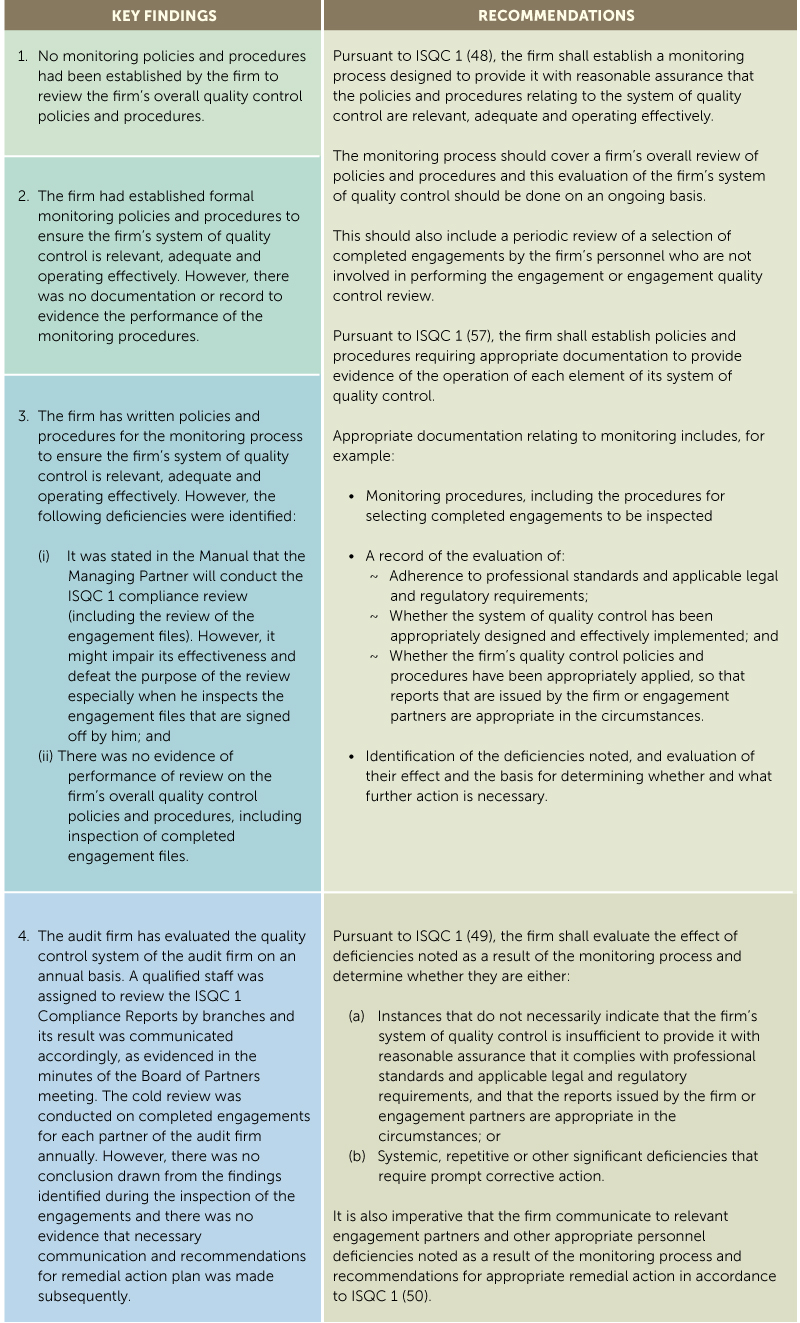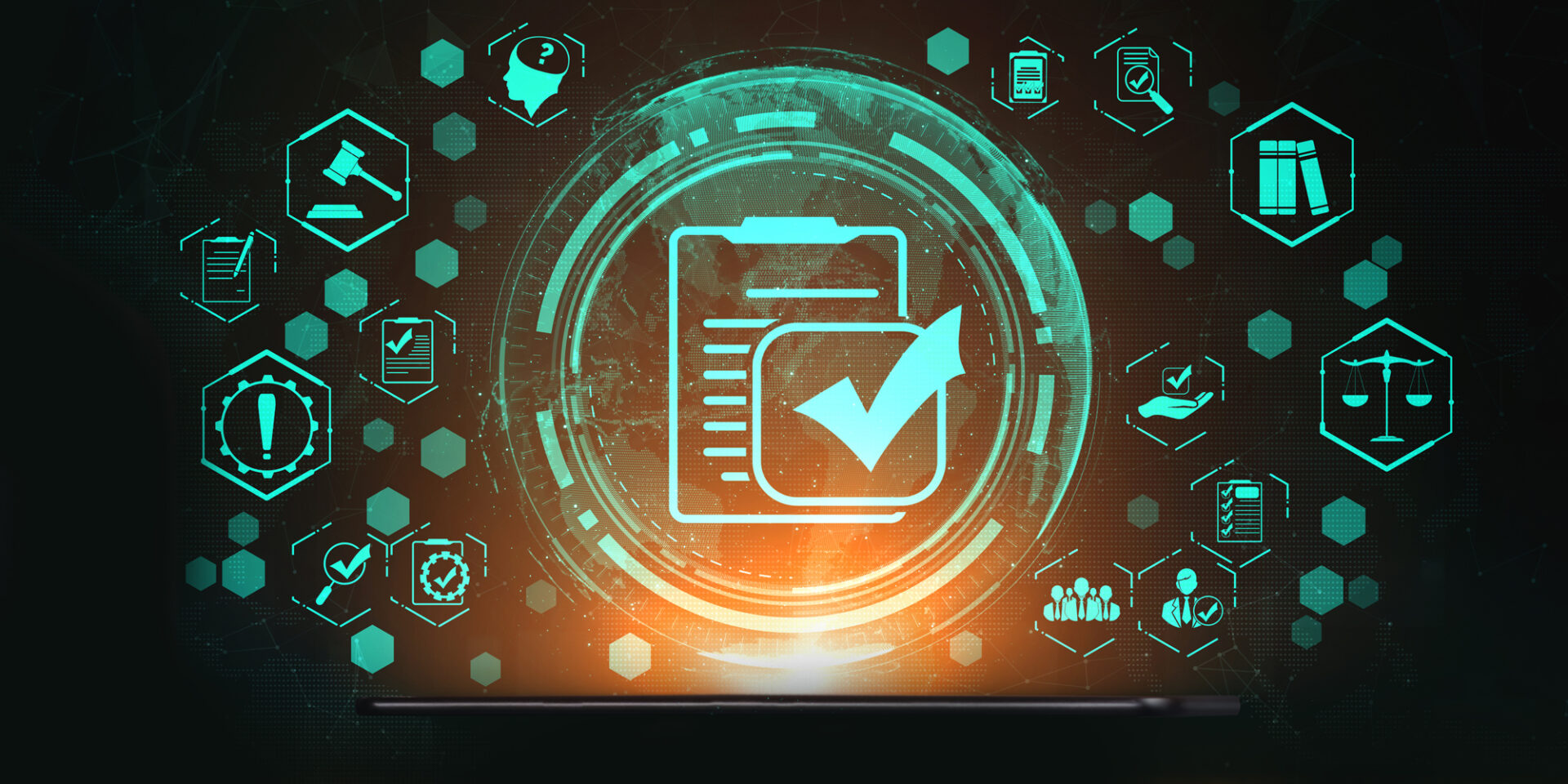By MIA Practice Review Team
Annually, MIA’s Practice Review Department (PRD) issues its Practice Review (PR) report to provide an overview of PRD’s assessment of the audit firms (firms) and share new initiatives and ongoing developments affecting the profession. Such information helps firms and public accountants understand the key areas for improvement in order to meet the requirements of the professional standards.
This article focuses on some of the key findings related to the monitoring process, gathered from the reviews conducted during the period from 1 Jul 2020 to 30 Jun 2021. Monitoring is one of the six elements of International Standard on Quality Control 1 (ISQC 1). This element covers the policies and procedures which a firm should establish to provide the firm with reasonable assurance that the policies and procedures relating to the system of quality control are relevant, adequate and operating effectively.
The findings enumerated in this article are not meant to be an exhaustive list of all the findings from PRD’s reviews during this period, but instead will highlight the pertinent areas specifically on the monitoring process that require attention from the firms. Further, the PRD wishes to emphasise that the findings raised below are meant to only serve as guidance to help members understand some of the monitoring requirements to be implemented within their firms in compliance with relevant professional standards and applicable legal and regulatory requirements, as well as in achieving quality audit.

There are various measures for SMPs to implement the monitoring process effectively. The firm may consider designating suitably qualified external parties (not the engagement quality control reviewer) to support its monitoring process. In particular, the firm may enrol in the Quality Assessment Programme (QAP), a voluntary structured review programme by MIA in collaboration with The Malaysian Institute of Certified Public Accountants (MICPA), which could support the firm in identifying potential deficiencies in compliance with ISQC 1 and the gaps in compliance with the auditing standards in respect of an audit engagement. It also will assist firms in formulating specific action plans to improve the quality of the engagements. The QAP programme can be one of the monitoring controls of the firm. For more information about the QAP, please visit MIA’s website.
Conclusion
While this article focuses on findings for monitoring, practitioners are advised to study all relevant professional standards and reviews available supporting implementation guidance in order to have a full understanding of the entire text of all the relevant professional standards and regulations, including their application. Further, practitioners are recommended to refer to PR Reports published by MIA for a more holistic view on the findings observed by the PRD.
While the PRD opined that establishment of the ISQC 1 manual is a good starting point, this does not automatically validate that the firms comply with ISQC 1. The firms have to ensure that the established policies and procedures in the ISQC 1 manual of the firm are being effectively adopted and executed with appropriate documentation to demonstrate the compliance of each and every element in ISQC 1.
*Reminder to audit firms: Firms are advised to study the requirements of the three new quality management standards approved by the International Auditing and Assurance Standards Board (IAASB), which will be effective from 15 December 2022. The standards, namely International Standards on Quality Management, ISQM 1, ISQM 2, and the International Standard on Auditing, ISA 220 Revised, are aimed at a more robust System of Quality Management for firms using the IAASB’s standards, and mark an evolution from a traditional, more linear approach to quality control. The new standards introduce a robust, scalable, and proactive approach to audit quality management which is central to ensuring trust and sustainability in the audit profession.






